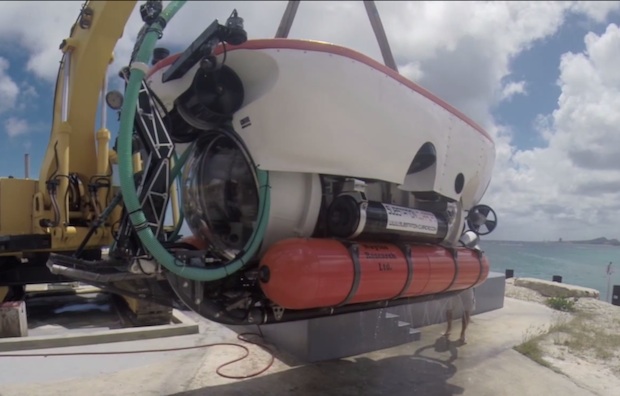The following is a guest contribution from Joe Oliver, a resident Marine Biologist for the Curacao Sea Aquarium and Substation Curacao.
As an aquarist (hobbyist or professional) there is a huge array of fishes available as possible options when it comes to stocking your system. They may be as lowly as a $5 damselfish, or prices can soar for super rare specimens like a platinum Asian arowana (Osteoglossum bicirrhosum), which can fetch up to $400,000. Though most of us are looking for something in between there are a large number of “rare” and “deep water” fishes that go for $1,000 for a Candy Bass (Liopropoma carmabi) to $10,000 for a Bladefin Basslet (Jeboehlkia gladifer).
This is still out of the price range for the average aquarist and tends to push these fishes into a specialty market due to their need for colder water and lower lighting than the typical reef system. Although many of these fishes can acclimate to tropical waters and thrive in a normal reef system, most are delicate and or specialists that may not get along with a traditional system.

Many deep water fishes garner such a high price not necessarily due to their rarity in the wild but because of the technical expertise and difficulties associated with collecting these fishes. Most of these fishes live below 100m (330ft) or more and are well beyond the limits of normal SCUBA divers. One would need a large amount of technical diving equipment, a long decompression, and several safety precautions just to dive deep enough to see these fishes, much less collect them.
Deep water fishes have become more numerous in the aquarium trade in recent years due to the advances in marine technology and the systems associated with handling, processing, and acclimating these special fishes. This process is done in only a handful of locations around the globe and involves technical diving, re-breathers, or submersible operations makes it possible to bring these deep sea gems to light.

In the following videos you can see some of what goes into the collecting and processing of deep water fishes along with a glimpse into their habitat. These videos take place on the small Caribbean island of Curacao, located ~60 miles North of Venezuela, which is home to many endemic deep water species that have been introduced into the aquarium trade. The Curasub, which operates from Substation Curacao, is one of a scant few submersible vehicles capable of collecting these fishes and currently is the only submersible of this nature in operation in the Caribbean.
In this video you get a virtual tour of what it is like to put the Curasub in the water and ride along for a deep sea immersion. You follow along as the submarine leaves its basin and ventures off into the deep for a scenic tour of the underwater world.
This video covers the handling and processing of deep water fishes that have been collected by the Curasub. You will follow along with two divers as they leave out from shore and drop down to 35m to rendezvous with the submarine and process the collected specimens. You can see several popular deep water rarities like: Golden Bass (Liopropoma abberans), Red Hogfish (Decodon puellaris), Candy Bass (Liopropoma carmabi), Spanish Flag (Gonioplectrus hispanus), and a few others being cupped for the decompression process. The video also contains a brief description of the decompression process and how these fishes make their way to the surface.

As you can see in the videos there is quite an operation necessary to safely bring these diamonds of the deep to the surface and into aquarium world. The Curasub has proven a pivotal tool for the safe collection and research on deep water fishes, reefs, and ecology around the island of Curacao. Without tools like the Curasub it would be extremely difficult to see many of these fishes and almost impossible to safely bring them to the surface.
However, Substation Curacao does more than collect fishes; they are also operate with partners like the Smithsonian Institution in order to conduct research on these deep reef ecosystems. For more information you can read more about the Smithsonian Deep Reef Observation Project (DROP). Although the price tags made dissuade the majority of hobbyist from acquiring one of these fishes, we can still all drool and dream, right?

For more about the Curasub and some of the fishes it has produced you can check out the following Reef Builders articles:



